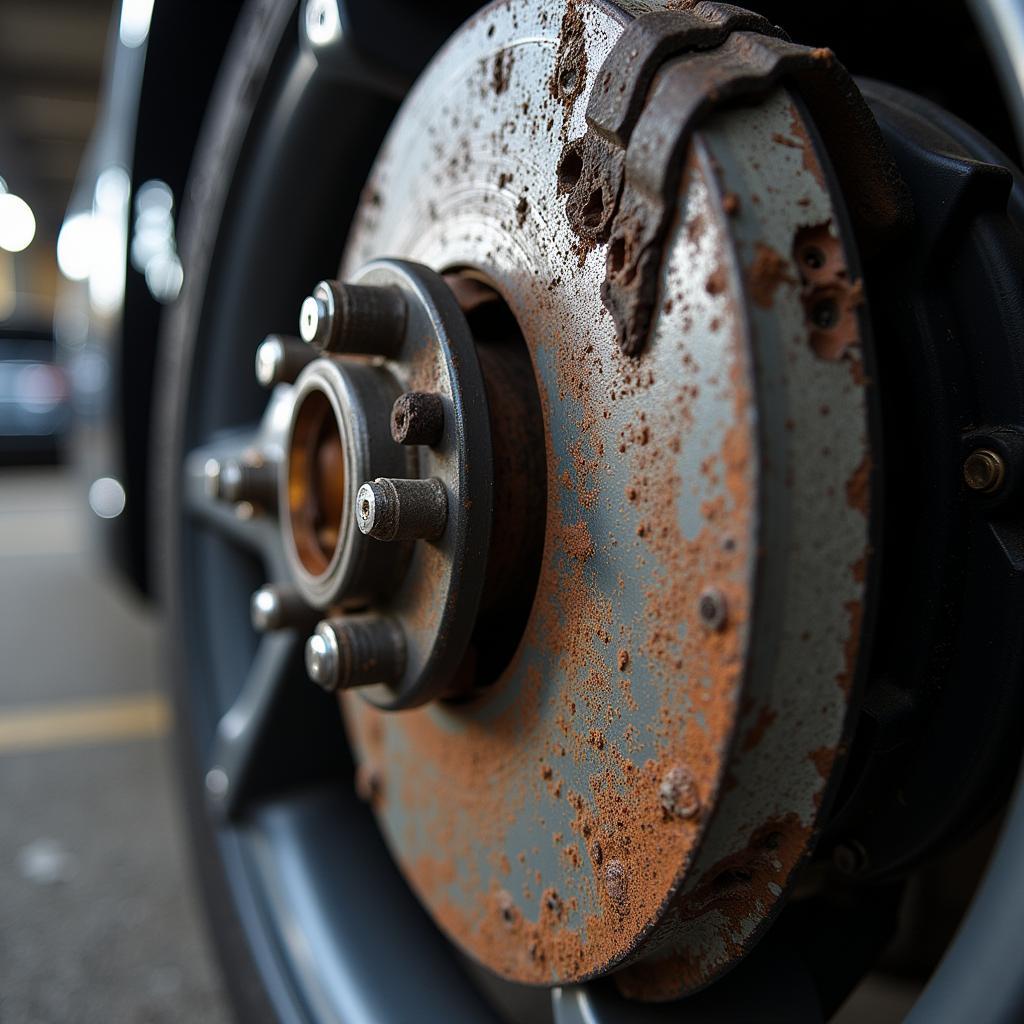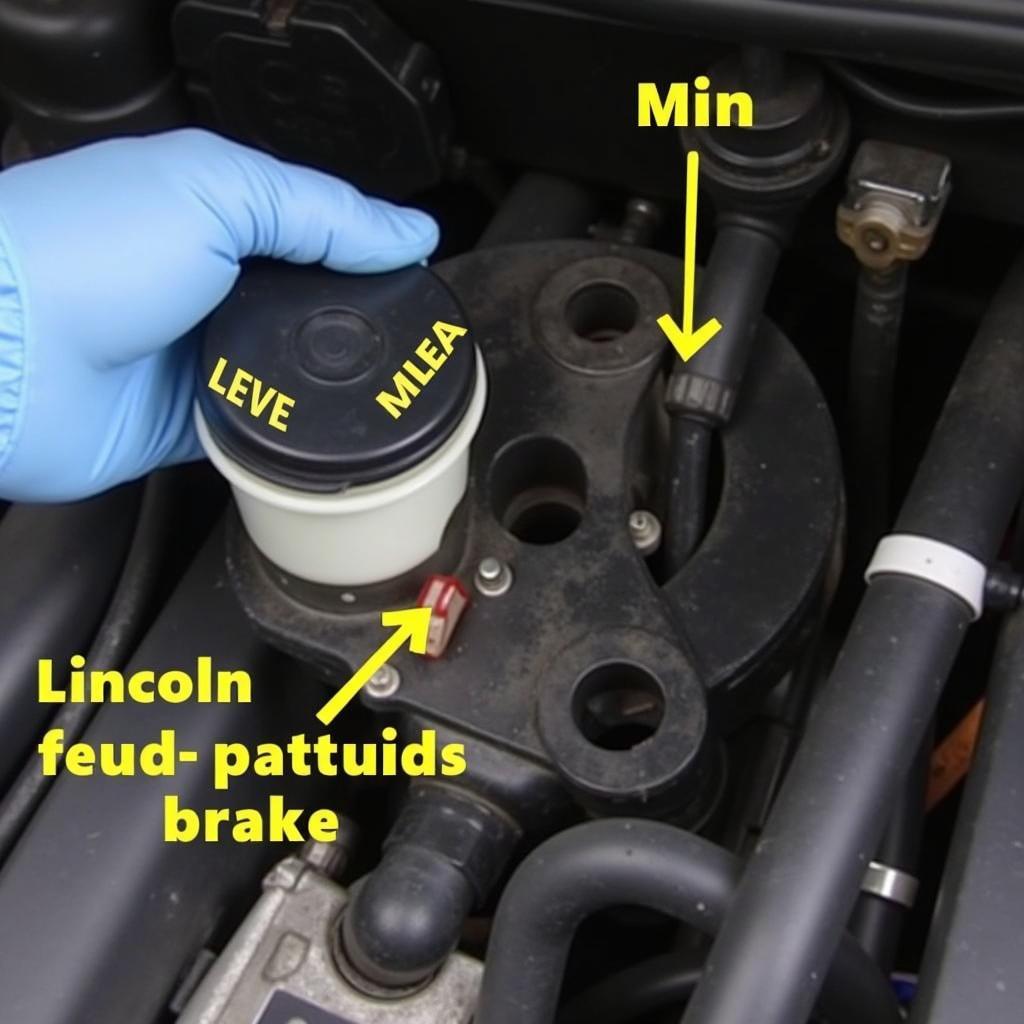The brake warning light on your 2013 Audi A6 dashboard is designed to grab your attention, and for good reason. It’s a crucial part of your car’s safety system, alerting you to potential issues with your braking system before they escalate into dangerous situations. Ignoring this warning light could compromise your ability to brake effectively, putting you and others on the road at risk.
This comprehensive guide will delve into the common causes of the 2013 Audi A6 brake warning light and provide you with insights on how to diagnose and address these issues. Whether you’re a seasoned DIY mechanic or a car owner looking to understand the problem better before taking it to a professional, this article is for you.
Understanding Your Audi A6 Brake System
The braking system in your Audi A6 is comprised of several interconnected components working together to ensure safe and efficient stopping power. These components include:
- Brake Pads and Rotors: These are the workhorses of your braking system. When you press the brake pedal, the brake pads clamp down on the rotors, creating friction that slows the vehicle.
- Brake Fluid: This hydraulic fluid amplifies the force you apply to the brake pedal, transmitting it to the brake calipers at each wheel.
- Brake Calipers: The calipers house the brake pistons and pads, pushing the pads against the rotors when you apply the brakes.
- Sensors and Warning Lights: Your Audi A6 is equipped with sensors that monitor the health of your brake system, triggering warning lights on your dashboard if any issues are detected.
Common Causes of the Brake Warning Light
There are several reasons why your 2013 Audi A6 brake warning light might be illuminated. Let’s take a look at the most common culprits:
Worn Brake Pads
This is the most frequent cause of the brake warning light. Brake pads naturally wear down over time due to friction.
How to identify: Most brake pads have a wear indicator – a small metal tab that scrapes against the rotor when the pad is nearing the end of its lifespan. This scraping produces a high-pitched squealing sound.
Solution: Replacing your brake pads is a relatively straightforward job that can be done at home with basic tools or by a professional mechanic.
 Worn brake pads on an Audi A6
Worn brake pads on an Audi A6
Low Brake Fluid
Low brake fluid levels are another common trigger for the brake warning light. This could indicate a leak in the braking system, which needs immediate attention.
How to identify: Check your brake fluid reservoir. It’s usually a translucent container with “MIN” and “MAX” markings. If the fluid level is below the “MIN” mark, it needs to be topped up.
Solution: If topping up the fluid solves the problem temporarily but the level drops again, there’s likely a leak in the system that needs to be diagnosed and repaired by a qualified mechanic.
 Brake fluid reservoir in an Audi A6
Brake fluid reservoir in an Audi A6
Faulty Brake Sensor
Like any other electrical component, brake sensors can wear out or malfunction, triggering a false warning light even if there’s nothing wrong with your brakes.
How to identify: A visual inspection of the brake sensors can reveal any obvious damage, but diagnosing a faulty sensor often requires specialized diagnostic tools.
Solution: A mechanic can test the sensors and replace any faulty ones.
ABS Issue
While less common, a problem with your Anti-lock Braking System (ABS) can also trigger the brake warning light.
How to identify: If the ABS warning light illuminates alongside the brake warning light, it’s likely an ABS issue.
Solution: Diagnosing and repairing ABS problems often requires specialized knowledge and tools, so it’s best to consult a qualified mechanic.
audi a6 2013 brake pads warning light
Importance of Addressing Brake Problems Promptly
Ignoring any warning light related to your braking system is incredibly risky. Addressing brake issues promptly can prevent more serious and costly damage in the long run.
Here’s why you should never ignore the brake warning light:
- Safety: Your brakes are the most critical safety feature in your car.
- Preventative Maintenance: Addressing minor issues early can prevent them from escalating into major problems.
- Peace of Mind: Driving with confidence knowing your braking system is in optimal condition.
Conclusion
The brake warning light in your 2013 Audi A6 is a crucial safety indicator, and ignoring it could have serious consequences. While worn brake pads and low brake fluid are the most common triggers, other issues like faulty sensors or ABS problems can also be the culprits.
If your brake warning light illuminates, it’s essential to investigate the problem promptly and address it with the help of a qualified mechanic. Remember, when it comes to your safety and the safety of others on the road, it’s always better to err on the side of caution.

